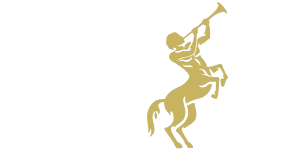-
Language and Dialect
Scottish Gaelic
Nowadays, less than 100,000 people in Scotland claim to have some form of Gaelic language ability, although there are still continuous efforts to keep it an active language and to bring it to younger generations. The tradition of speaking Scottish Gaelic goes back centuries. It developed out of Old Irish and people started speaking it as a distinct language around the 1300s. When looking at a map of Scotland, you will probably notice a lot of place names with Gaelic roots: Kilmarnock (literally ‘the church of my little Earnan’), or Balnakiel (literally ‘farm of the church’) to name just two. There are many theories about when the use of Scottish Gaelic began to decline, although there is often an agreement that it coincides with King Malcolm Canmore’s reign. With him, more English clergy came to Scotland and there was an increase in Anglo-Norman names. The push of Gaelic out into more rural areas came when the royal burghs were established around the same time, south of the Forth-Clyde line. In the late 1300s, there was then also a resulting ‘Highland/Lowland’ distinction. By the mid to late 1800s, there was already a visible geographical divide in the distribution of Gaelic vs. English speakers across Scotland (see map).
Scottish Gaelic is not to be confused with Irish Gaelic, from which it is derived, or Scots. The latter was spoken predominantly in the Lowlands and there is still discussion whether it is a separate language or rather a dialect, since it’s much closer to English than Gaelic. The Shetland dialect is also called Old Scots and has a stronger Norse influence. Even now, the Shetland accent sounds is often seen (or heard) as quite different to accents from other areas of Scotland. Similarly, the Orcadian accent - or Orkney dialect - also has influences from Norse words. Overall, there are many initiatives to keep the variety of dialects and accents in different areas of media and entertainment in order to keep them alive.
Map showing the Gaelic and English distribution, with the red indicating a decline of Gaelic knowledge, in particular outside the Highlands (1891)
Resulting problems
Many historians have documented a so-called anti-Gaelic sentiment arising from this divide. Highlanders were often seen as barbaric, their language incomprehensible and their way of living uncivilised. Some stereotypes, including those of Highland cannibalism and lawless, incestuous clans, are also related to anti-Jacobite propaganda in the 1600s and 1700s. Gaelic seemed to be almost non-existent in official records and at the end of the 1800s, the census shows that roughly 44,000 people spoke only Gaelic and around 210,000 spoke both Gaelic and English.
From a medical perspective, it is important to remember, however, that there was more knowledge concerning remedies and healing documented in Gaelic texts and manuscripts than one might have thought, for example in Gaelic translations of the ancient treatises, such as Hippocrates. Unfortunately, by 1800 the traditions of Gaelic medical practices had ended almost completely in Scotland.
With the declining numbers of Gaelic speakers (and Gaelic practitioners), a language barrier in some cases went as far as complicating visits to physicians – with one Lowlands doctor complaining that his patient was ‘incomprehensible’. Such a miscommunication could also further the distrust many locals likely had towards medical practitioners, many of whom had not grown up or studied in the Highlands. A report from 1858 commented on the lack of ‘medical men’ who could understand Gaelic, let alone speak it themselves, and noted that in some cases, third person translators or mediators were needed. Some people did, however, recognise the need for Gaelic speaking doctors. In 1887, Professor Blackie (instrumental in the establishment of a Chair of Celtic at Edinburgh University) argued that five ‘classes’ in the Highlands needed to be able to speak Gaelic, including doctors. However, the dire need for more medical practitioners in the remote and rural areas often eclipsed the additional need for Gaelic language skills - the medical care was more important than the language in which it could be delivered.
A few Gaelic medical words
Nurse = banaltram or muime
She got a nurse = Fhuair i muime
Muime can also mean midwife.
Doctor = dotair or ollamhan
We called the doctor = Thug sinn a-steach an lighiche
Midwife = bean-fhritheilt or bean-ghlùine (In some areas, the word for a midwife was frequently ‘howdie’)
Medicine (i.e. ingredients/drugs) = cungaidh or léigh
Your knowledge of medicine will suffice = Tha de dhotaireas agad fhéin a nì an gnotlach
References and further reading:
https://en.wikipedia.org/wiki/Scottish_Gaelic [also for image; in the public domain]
https://en.wikipedia.org/wiki/Anti-Scottish_sentiment
https://newsnet.scot/archive/scotlands-language-myths-4-gaelic-is-only-a-highland-language/ [also useful for more reading on Pictish and Ango-Saxon influences and interactions with Gaelic]
https://www.scotland.org/about-scotland/culture/language
Martin MacGregror (2009), ‘Gaelic Barbarity and Scottish Identity in the Later Middle Ages’ https://core.ac.uk/download/pdf/42351954.pdf
Dr Daisy Cunynghame, ‘The Roles of the Edinburgh, Kelso, and Newcastle Dispensaries in Charitable Relief, 1776-1810’, PhD
Malcolm Nicolson (2013), ‘Midwifery in Scotland: A History’, Northern Scotland, Vol. 4 (1), pp.99-101
Sheila M. Kidd (2020), ‘“Gaelic A Recommendation”: Language and Employment in the Nineteenth-Century Highlands’, Journal of Scottish Historical Studies, Vol. 40 (2), pp.77-102
For more Scottish Gaelic - English translations: https://www.faclair.com [This will also show you the location of where the word is often spoken]
http://www.orkneyjar.com/orkney/dialect/
Pierce Grace (2020), ‘Medicine in Gaelic Ireland and Scotland, c.1350-c.1750’, in Irish Historical Studies, Vol. 44 (166), pp.201-223

